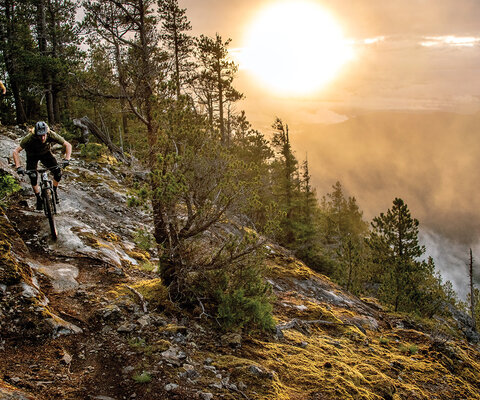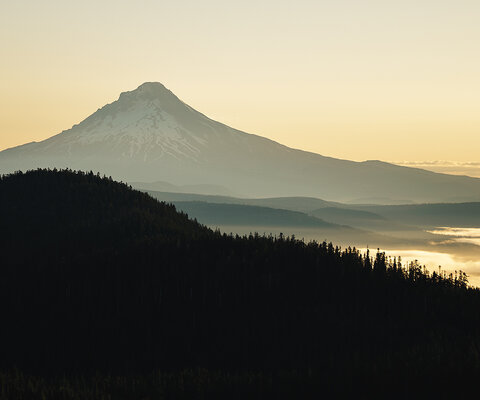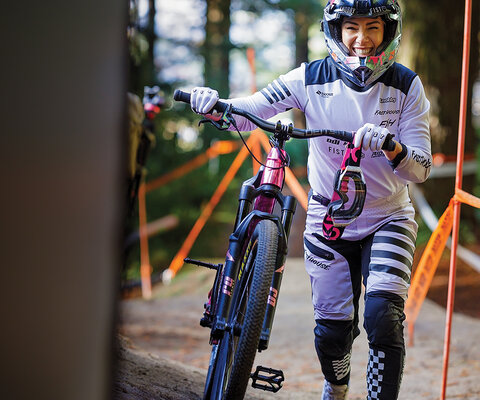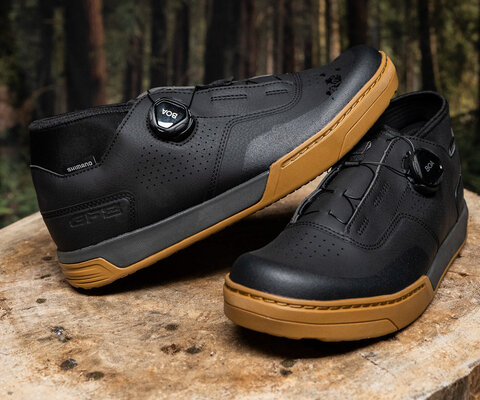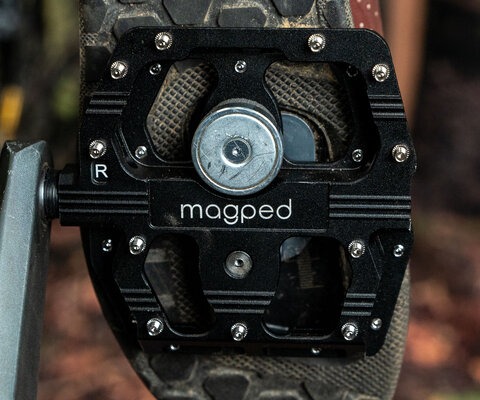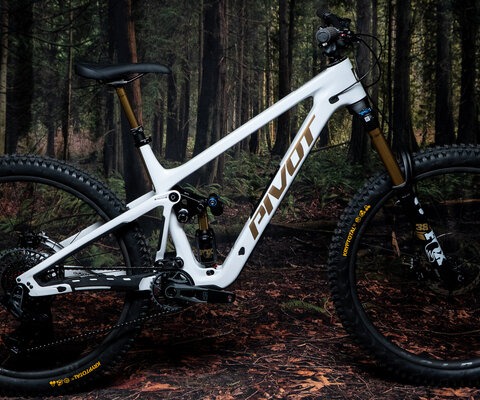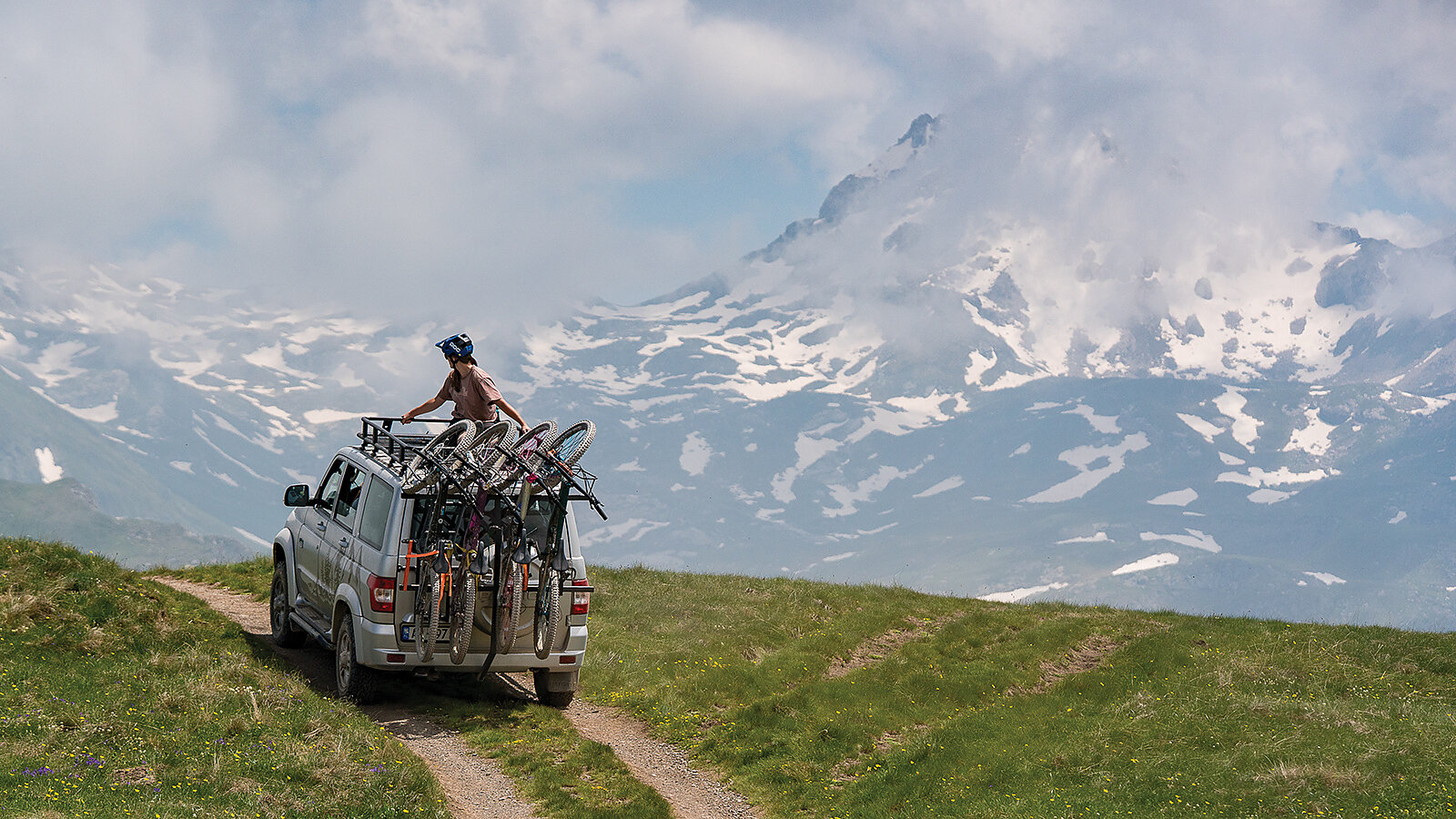
Raki Terrain Sipping and Sliding Through the Balkans
Words by Caroline McCarley | Photos by Leslie Kehmeier
Our small group sits down for a 9 p.m. meal, a part of the evening that, after several lengthy days of riding, we’ve now affectionately coined “dirtbag dinner.” This now-familiar ritual has yet to happen in anything other than our mud-stained bike garb, the dust on our faces an added accessory from the day.
They say you haven’t experienced the Balkans until you’ve sipped raki with someone who’s made it themselves. I look to my left as I hear the familiar sound of glass clinking glass. I watch as the liquid of Albania’s traditional spirit, made of fruit brandy, is poured into thimble-sized cups and strategically placed around a table that’s already overflowing with food. Our host, a local music teacher and guesthouse owner, moves with the grace of someone who has done this thousands of times before.
Sharing raki is a cultural experience ingrained in the Balkans region, peeling back layers to make way for community and tradition. The clear-colored spirit embodies the hospitality of the people, and this particular distillation on offer is stored in an old Jack Daniels’ handle, as if we needed more proof that it was homemade and created to share.
“Gëzaur is how we say cheers,” says Orgest Noka, our guide.
Glasses in the air, we all chant the Albanian word in unison, the days-old camaraderie of the group already solidified in a way that only happens after hard days on a bike. I take a sip, as is custom. We all do. It’s a little hard to swallow—a powerful punch that’s potent as it works its way down my throat. When it settles low in my belly, I have a moment to savor its distinguishable, complex flavor, fiery and warm. As I sit with the lingering taste of the raki, I realize this experience represents much of life in this region. There’s no polish. It’s wild and intense, but also raw and unforgettable. Like that first sip of raki, the Balkans don’t ease you in; they grab you by the throat. Our first taste was in Kosovo.
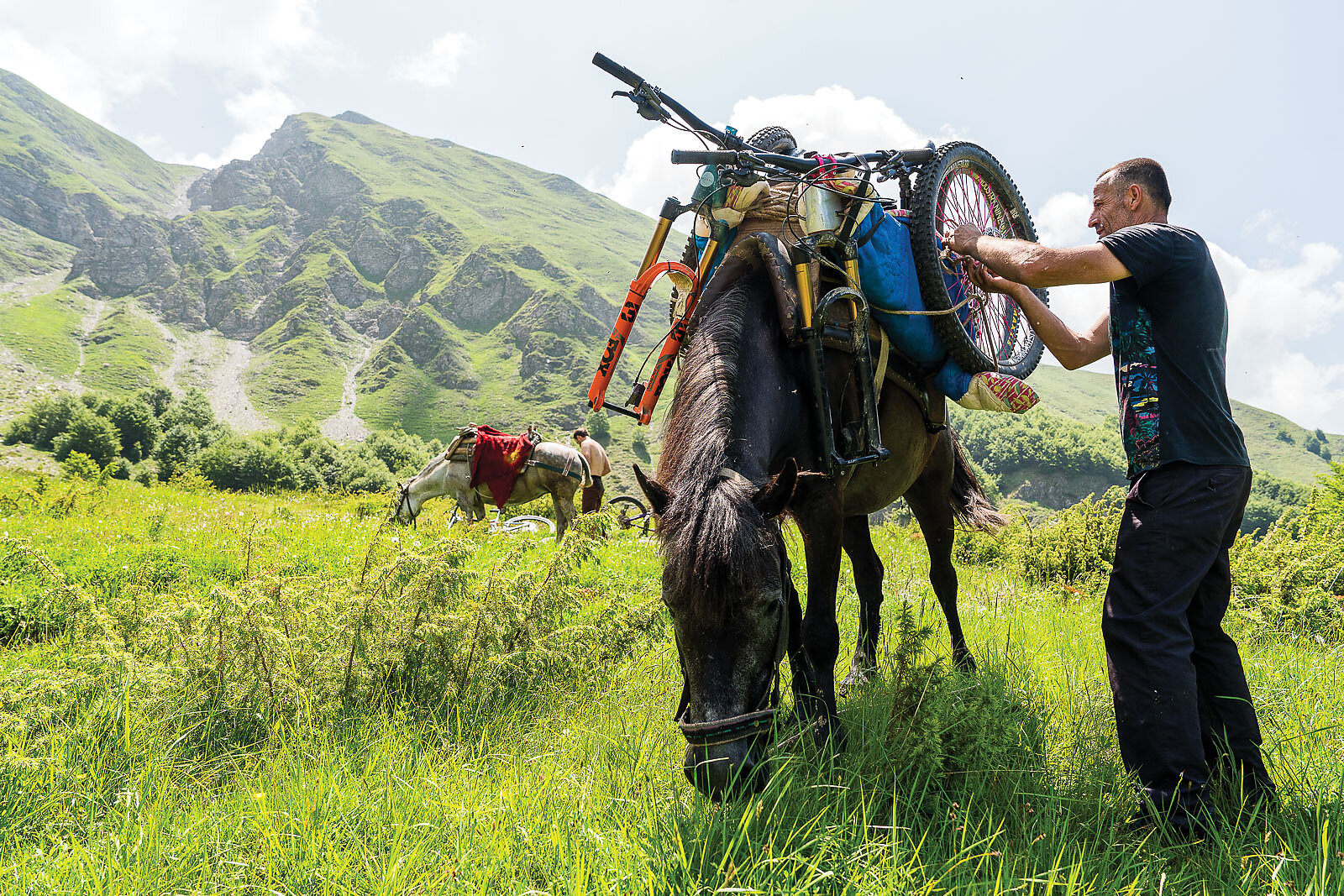
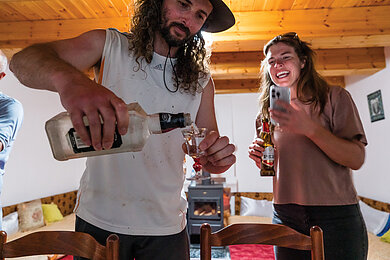
Photographer Leslie Kehmeier and I had heard chatter of bike trails in the Balkans, but not much else. An area that doesn’t have much documented mountain bike history attached to it, we had grandiose plans that involved fellow accomplice in bikes and stoke, Amanda Bryan, and a tentative syllabus that wasn’t much more than a Google Doc with the word “plans” typed at the top. The initial idea was to attempt it ourselves—a DIY road trip of sorts— but finding information on trails in the area proved difficult. Thankfully, 31-year-old Albanian native Noka, the owner of Ride the Balkans guiding company, was brave enough to say yes to an Instagram inquiry from three rowdy American women with one request: make it an adventure.
One day on our trip, Noka passed the reins to Arben “Beni” Kuçi, a local hike and bike guide, born and raised in Kosovo. One day in these mountains, and it’s easy to understand why research on the trails is limited. Two days, and you understand that navigating them without someone rooted to the land is impossible. Noka and Beni have each spent countless hours looking at satellite images, navigating and testing the spiderweb of worn-in tracks created by the original trailbuilders: livestock. These animals have left rough drafts on the terrain with enough bite for these two to visualize a two-wheeled machine ripping down them. They’ve put their time in too, building and maintaining singletrack throughout the area.
“Many times, I ask the villagers where the trails are,” Noka told us on our first day. “They say, ‘We don’t have them.’ So, I ask them ‘Where do the animals go?’ And I go there.” With passports in our packs, we follow a track from Kosovo into Albania on a trail named Shtegu i ngiyrave, the trail of the colors. The day started at 5 a.m., when I was awoken by the melodic recitation of a call to prayer echoing through our hotel room’s open skylight in Prizren. It was quite the juxtaposition as, just hours earlier, the sound of celebratory fireworks saluting the results of the Albania versus Serbia football match had rattled windows.
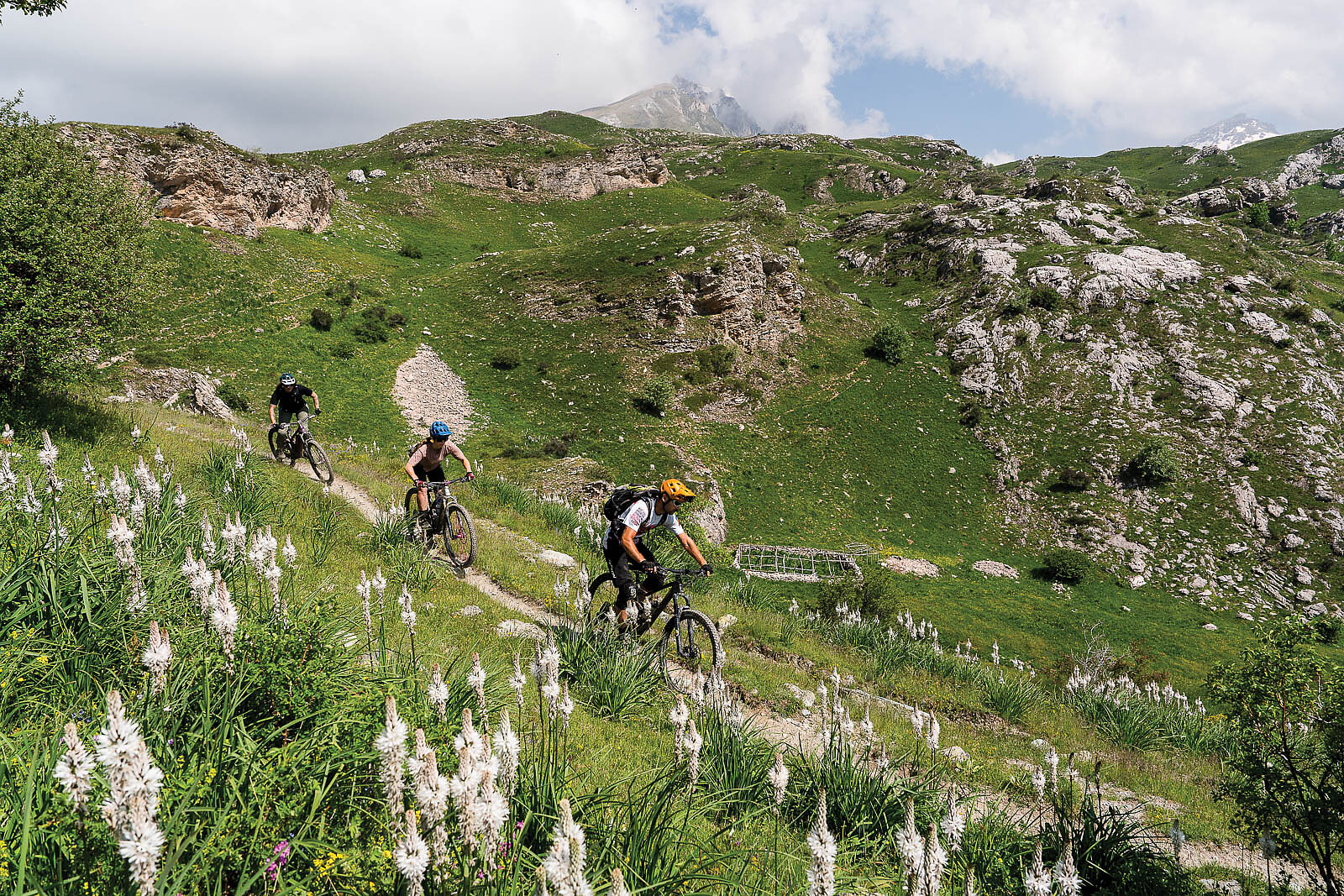
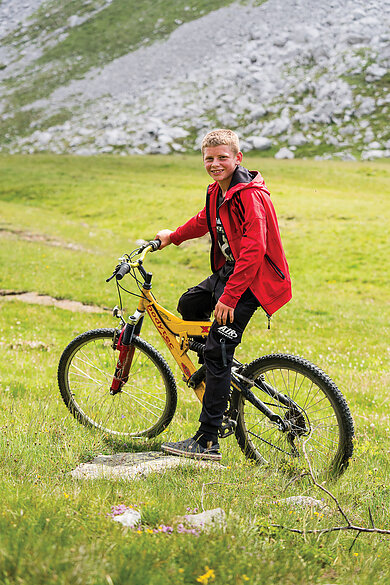
Here in the Kukës region, the singletrack we ride winds alongside a river that cuts the valley in half. There’s a makeshift farm on the side opposite us with an informal shed that I imagine serves to hold sheep in the summer months, pieced together with metal, wood, and hay, its fencing a simple but sturdy fabrication of slim logs tied together. The farmer shouts to us in Albanian, asking if we’d like coffee. Unfortunately, we have hours left on our bikes and no time for an added dose of caffeine.
The border crossing is short and sweet, uneventful really, a weathered tall marker the only evidence that we’re riding into a different country. I glance back at the border post, now a speck on the horizon, and realize that without fanfare or stamps or even a proper road, we’ve entered Albania.
“This is the end of the hiking your bike,” Beni says hours later, but I don’t believe him. He’s already said that twice, which makes me think it’s a tactic used by well-versed guides to keep the momentum of the ride moving forward. I can see the trail ahead continuing to twist uphill through an open meadow, past rows of concrete bunkers that have long been reclaimed by the earth. Like that first swig of homemade raki, it hits a little harder than I anticipated. The sight feels so foreign amidst nature’s expanse in front of us, a tangible piece of history harboring the stories of this region’s tumultuous past. A legacy of the communist era, the shelters are scattered across Albania’s ridgelines. They were built by a dictator whose paranoia led to their development but, to our guides, they’re now just part of the trail system they play on. We continue to push our way up, my arms extended above my head, gripping my handlebars as I navigate my bike around the ruts. I ask Beni if he was alive during the Kosovo War. He was 9. His family fled to Albania, then returned six months later to find their village had been burned to the ground.
“We rebuilt together,” he says without embellishment. “Albania holds a piece of me. People always ask, ‘So, are you from Kosovo or are you from Albania?’ I tell them, ‘I’m an Albanian from Kosovo.’”
His statement illustrates how culturally intertwined the region continues to be. It feels odd to say, but that familiar heat I feel once again is now welcomed. It gives way to a better understanding of this land and the resilience of its people. Beni’s certainly not trying to hide his history, but he isn’t lingering on it either—a reclamation almost, deciding to focus on what’s in front of him and share what he loves about Kosovo and Albania.
"Orgest, who would survive if you and I were in a bunker together?” I say, chiding our other guide and deflecting from sitting with my own thoughts for too long. “Easy,” he says, rolling his eyes. “The wildest one.”
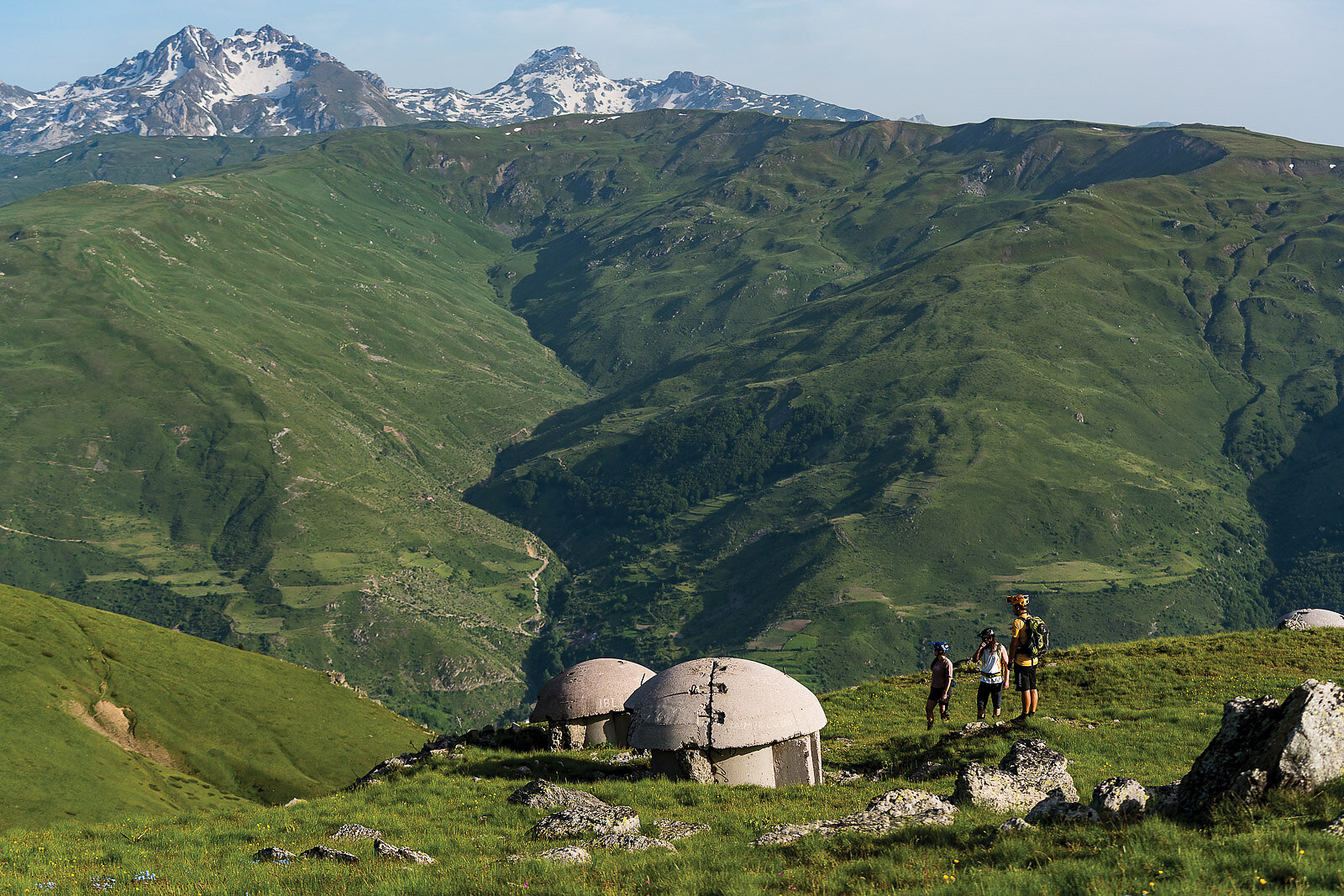
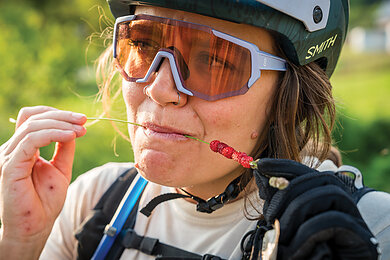
Beni navigates the descent we finally reach like it’s his birthright, and I guess in some ways it is. I, however, struggle to find the right line. Do I stick to the uncommonly narrow, winding dirt trail etched so deep into the field that I risk a pedal strike against its trenched walls, or do I ride above it, weaving my way down next to the track? Beni and Noka jump back and forth between the two options smoothly, showing me to ride it in whichever way a particular section calls for.
At that moment, Kehmeier comes barreling down the mountain with a hoot and holler, yell- ing words that accurately encapsulate the energy of the trail and what it feels like to be descending it: “Albanian freeride!”
She catches up with Noka, who’s in the lead, and the two close the gap, disappearing into the valley below, no brakes, all fire under their tires.
In Albania, we jump at the chance to shuttle into the high mountains. As Noka’s 2019 “Be ready to jump,” Bryan bellows as we begin to crest the top of what feels like a never-ending ridgeline laid out before us.
There’s a dropoff to my left, a dropoff to my right, and, in front, two dirt scars a car’s length apart, carved strategically into the hillside, barely visible through the overgrown meadow that’s teeming with color from the wildflowers. As Bryan yells those words of warning, she also shifts to her left and tucks into the fetal position, grabbing hold of the roof rack that is caging both of us in to the best of its ability. The well-worn doubletrack ahead proves that vehicles have indeed been here before us but, always one to lean into theatrics, I follow suit. We’re now both lying sideways on the roof of Noka’s rig, feeling every bump, shake, and rattle the car encounters while the four, vertically loaded bikes on the back rack seem imperturb- able. I shift the angle of my head and use one eye to peer over the rail, which gives way to a perfect portrait view of Mount Korab, the highest peak of not only Albania, but also North Macedonia, the country that sits on the other side of its summit. It’s a peak comparable to those seen in the Alps, but somehow this mountain seems rougher around the edges. If the car flips, “no helicopters are coming,” says Noka. It’s a phrase, often repeated by him, that’s meant to give us an indication of just how remote we are. But the car doesn’t topple. It levels out. Bryan and I throw our heads back in unison, bursting into cackles that merge and reverberate into the wind whipping violently around us.
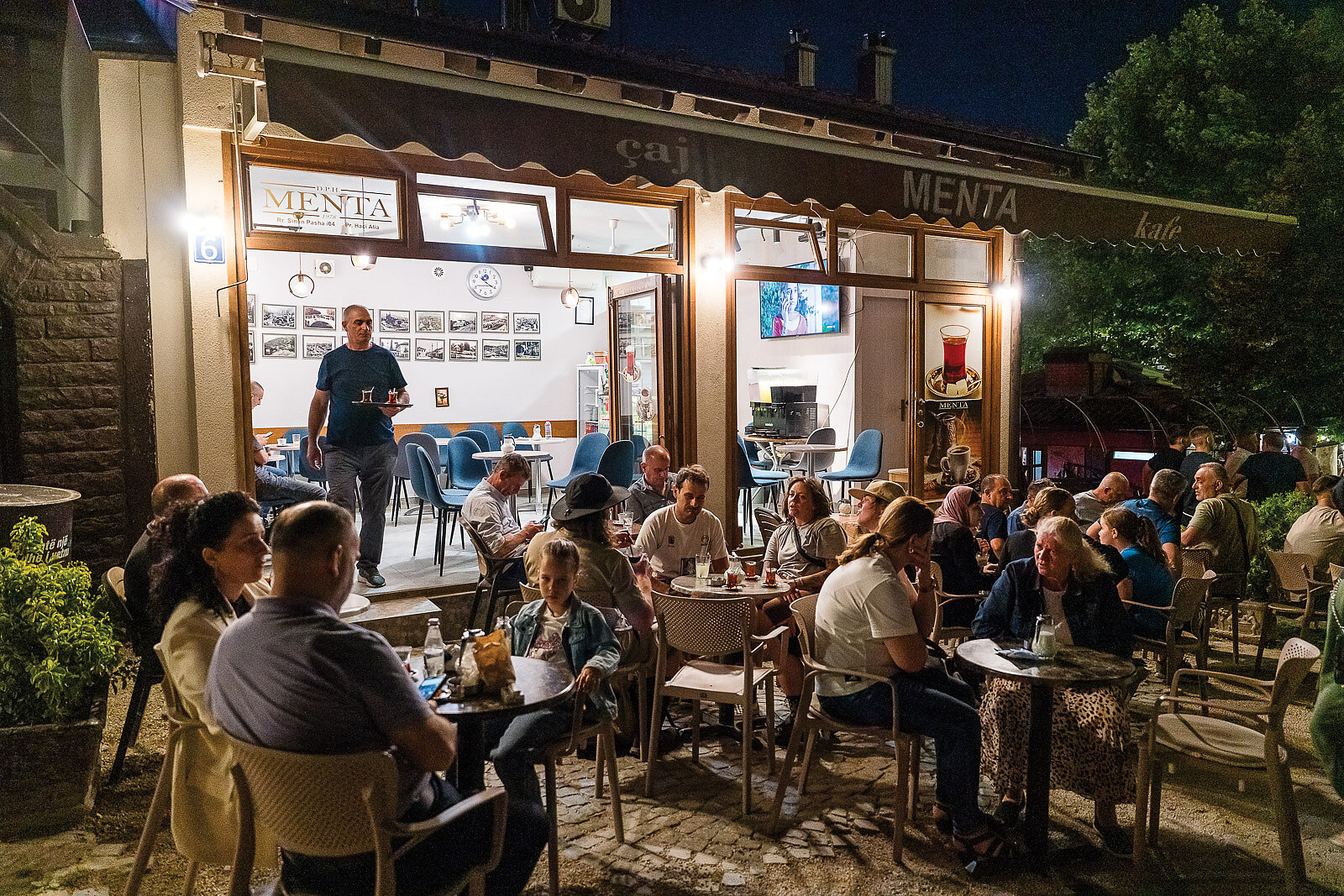
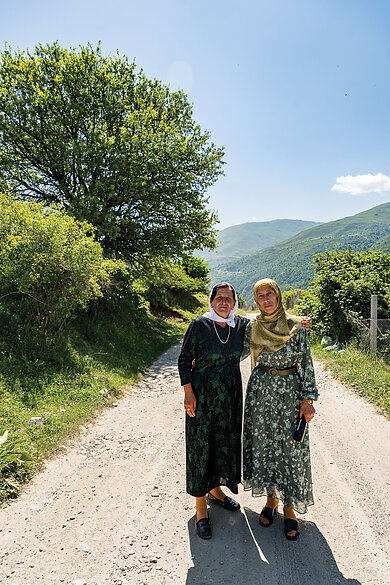
“Orgest, you dirty dawg,” Bryan cries out at him with an exaggerated Southern drawl. It’s part of our group’s newly developed language; loosely translated, it means we dig this.
“Americans are so easily pleased,” we hear Noka say from the driver’s seat of the car to Kehmeier, and it’s certainly true in this scenario. This place feels like the last wild piece of Europe and we’re the only ones here, lucky to behold its splendor.
We begin our descent of the Korab trail from what feels like the top of the world. Noka takes off, Bryan and I close behind, while Kehmeier brings up the rear. The trail ebbs and flows through the mountains, each turn revealing a view more stun- ning than the previous. The singletrack is loose, with rocks that may catch you if you’re not paying attention, but we’re settling into the rhythm and learning to love the raw and natural flavor.
Each day, to this point, has brought a different type of terrain ranging from giant slab where my bike and I get to decipher our own way down, to tight, chunky singletrack that snakes its way down a hillside barely visible to the untrained eye.
Later on in the trip, the four of us laugh together over dinner in the main room of Noka’s cousin’s home in the village of Blliçe, where his family is from. Ravenous from a big day in the saddle, we dive into the delicious vegetable stew and the fresh bread his wife has made for us, with warm milk on the table from the goat outside the front door. We’re recounting the day and giggling over our end-of- the-ride dip in a river formed by snow melt. Before getting in, we had noticed two women on the ledge above, in modest clothing, tilling the land. We made sure Noka asked them for permission before we shimmied into the glacial-cold water in our skivvies.
“I thought they should know exactly what we would be swimming in,” Bryan says. “You need to ask these questions,” Noka says. “It’s important to respect the traditions and culture here. It was good to do this.” I think back to those women who didn’t speak English but gave us a nod, the universal sign of ap- proval—go on, you crazy ladies. Their initial look of shock at our attire quickly melted into slight smiles, like they were amused and excited to share a littlebit of Albania and happy we were experiencing it.
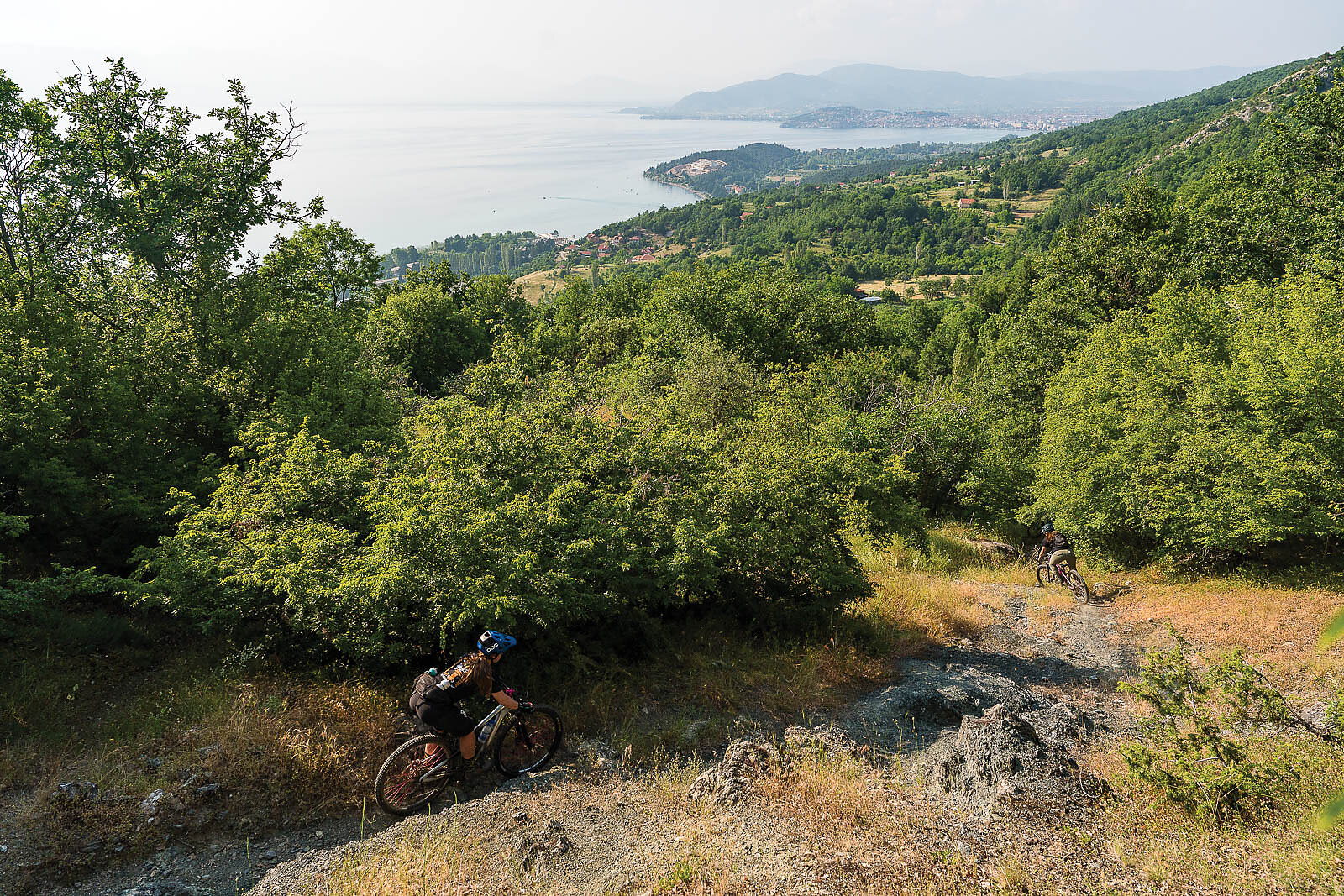
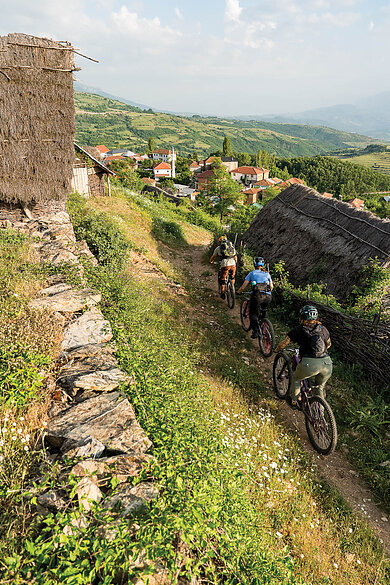
This feeling of unspoken welcome recurs on countless occasions. Through the gesture of our shuttle driver, Suri, who on one day greeted us at the end of a ride with a giant block of feta and strawberries delicately strung onto a blade of grass; or in Noka’s enthusiasm, insisting on “just one more trail” like a kid who doesn’t want to go inside yet; or in his cousin who, looking to extend dinner, invited us to his village’s watering hole even though we didn’t share a common spoken language. He knew that good company, and maybe a little raki, speaks for itself. That energy lingered as we crossed into North Macedonia, where the buzz of the Balkans fully set in.
Once there, we pick up Jovan “JJ” Jovanoski at a gas station. Local intel is an integral part of Ride the Balkans’ mission, and JJ feels as local as they come. A guide for all types of outdoor adventure in North Macedonia, and another native eager to show us the land, he’s sneaking away for a few hours while his son naps to take us for a hot lap on the Kojnsko Trail. It’s named after the partially abandoned village in Galičica National Park and descends all the way down to Lake Ohrid, one of the deepest and oldest lakes in Europe. He squeezes into the backseat of the Patriot with us, four people crammed into a three-person row, Kehmeier sitting on my lap to accommodate.
“You want lunch first, then good time, yes?” JJ says in an accent so fast and so thick it’s almost hard to pick up the words.
The good time starts high above the lake, overlooking the city below. After all of the ground we’ve covered this week, it’s different to be riding a trail so close to town. We dive behind JJ onto a trail with natural turns and rolls woven into the singletrack that has obviously had little to no maintenance, but it still runs incredibly well. The way we’re all ripping through this section, one person after the other, makes me feel like we’ve finally figured it out.
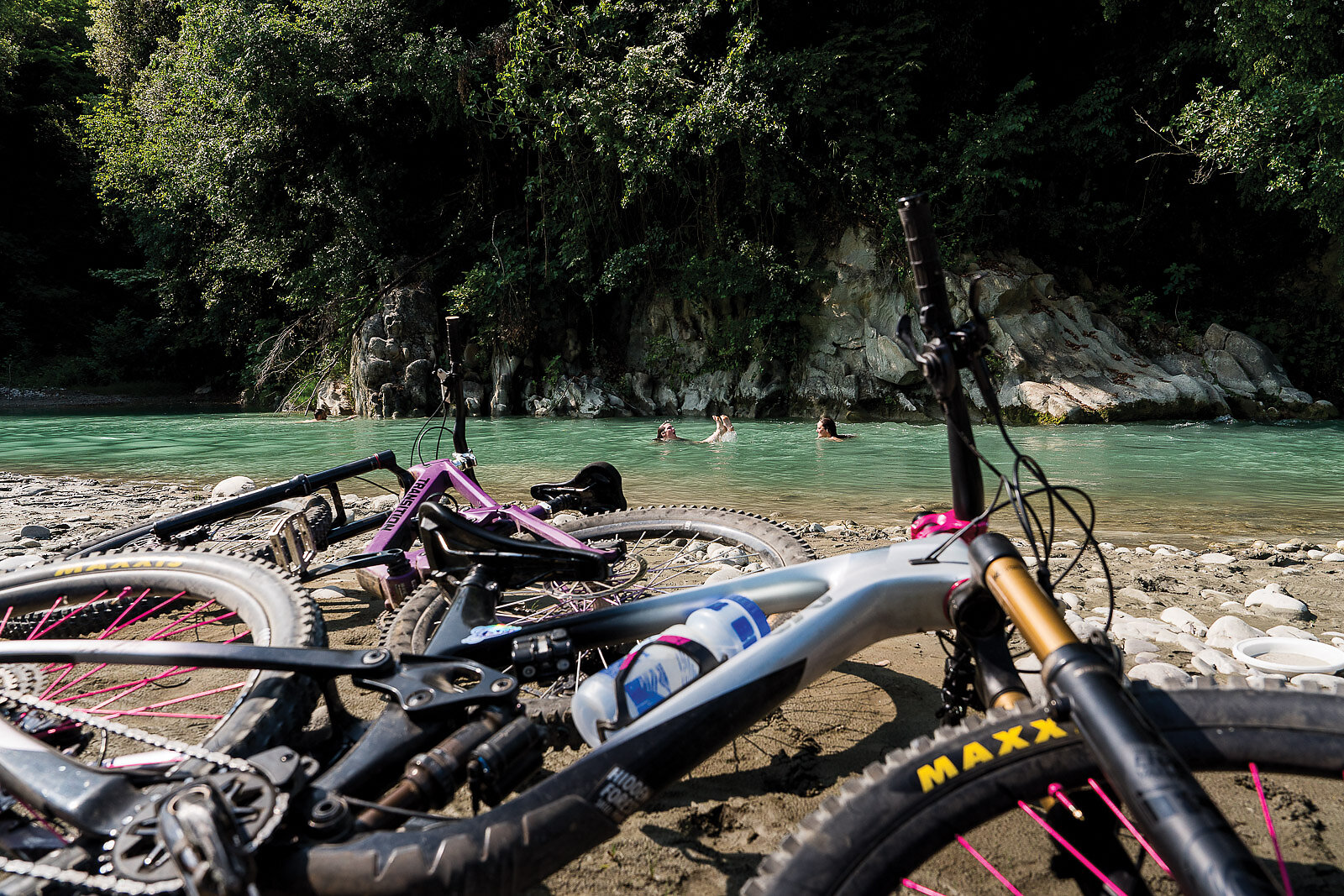
We keep descending all the way down to pavement, crossing a heavily trafficked road, then through a narrow alley that opens to new-to-this-trip terrain: sand. Standing on the beach of Lake Ohrid amidst the swimsuit-clad beachgoers, Kehmeier, Bryan and I look out of place in our bike helmets—eight days’ worth of dirt and dust layered onto our bodies. With our backs to the lake, Bryan and I lean, arms fully extended, and fall backward into the clear blue water with full bike gear on as Kehmeier snaps a photo. A giant splash ripples through the lake as we hit the water. We surface. Delirious from the many miles of the week and high on the grand finale of ending this trip lakeside, the three of us let out a big sigh that bubbles into a burst of giddiness and chortle that JJ catches as he makes his way toward us, a frosty mug of beer in his right hand.
“This is what it’s about, the silly moments,” he says. “It’s good to be silly. Didn’t want to take your helmets off though?”
Noka and Suri follow behind, both running into the water with little to no abandon. We’re all feeling the surge of accomplishment. I make eye contact with my two comrades in this adventure floating in the water alongside me and they nod, knowing what to do. We scream in unison: “Orgest, you dirty dawg!” We’re unfiltered and unapologetic now, just like the Balkans have proved to be. Our guides have passed the secrets of their region down with pride and offered, as a sign of trust, the ultimate gestures of hospitality. We’ve experienced the land, its people, and what feels like every last bit of singletrack in the area. Later that night, after we’ve dried off from our dip in the lake, I make sure my cup of raki is filled right to the top.
We’re unfiltered and unapologetic now, just like the Balkans have proved to be.
